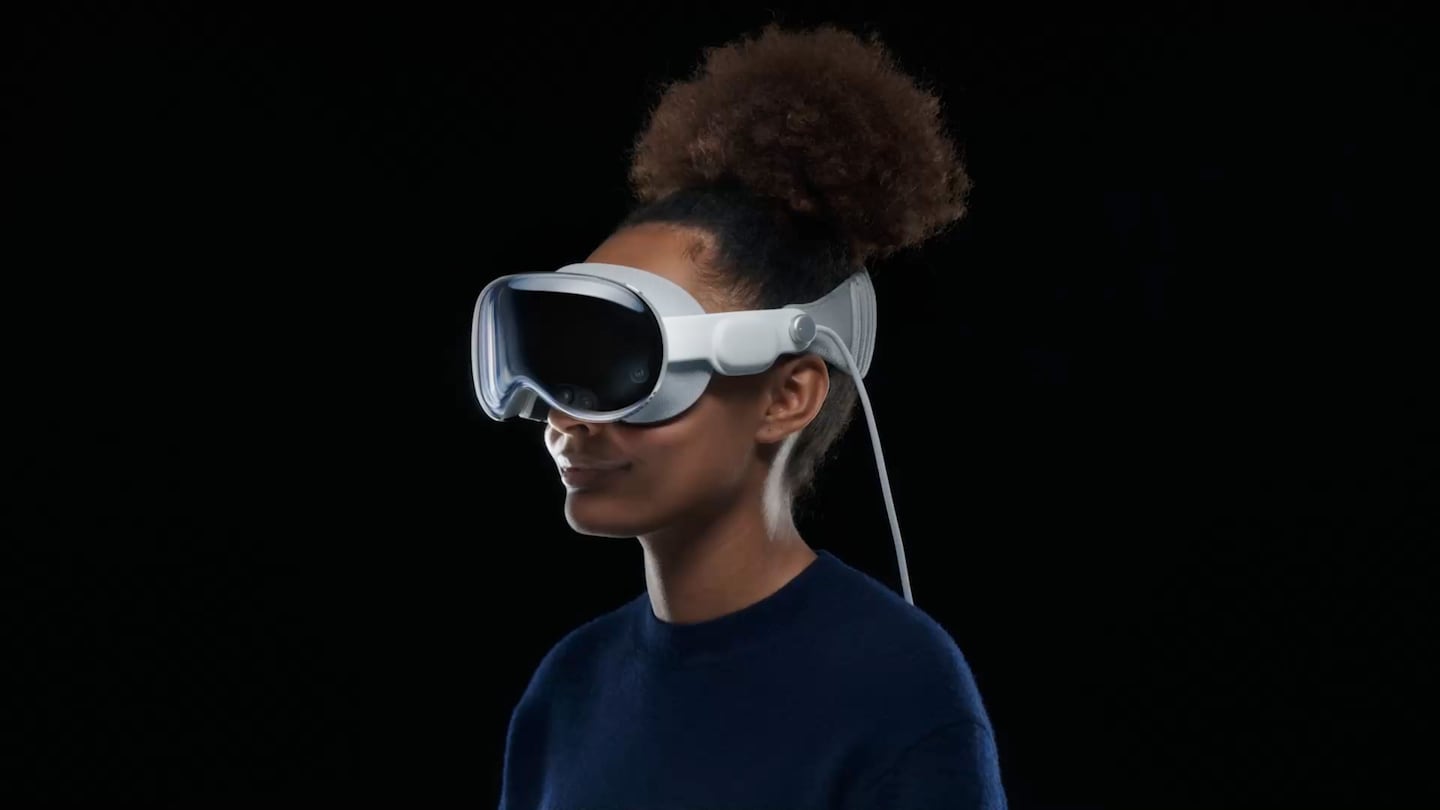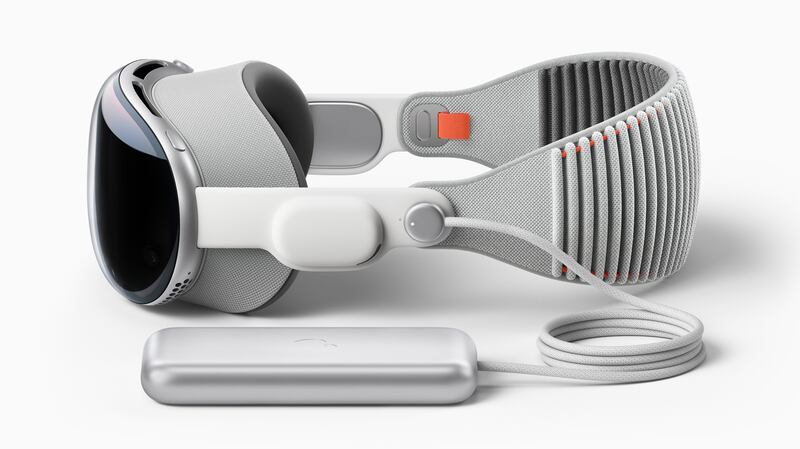
The Business of Fashion
Agenda-setting intelligence, analysis and advice for the global fashion community.

Agenda-setting intelligence, analysis and advice for the global fashion community.

Goodbye “metaverse.” Hello “spatial computing.”
Apple announced its first augmented-reality headset, the Vision Pro, at its annual developer conference Monday, describing the high-tech goggles, which allow the user to layer digital elements over their surroundings, as a “wearable spatial computer.”
“You can see, hear and interact with digital content just like it’s in your physical space, and you control Vision Pro using the most natural and intuitive tools: your eyes, hands and voice,” said chief executive Tim Cook as he introduced the new product.
With the Vision Pro, Apple joins other companies, from tech giants such as Meta and Google to start-ups like Magic Leap, that have tried to sell consumers on headsets that combine physical and virtual into a blended reality. The idea is often dubbed the “metaverse,” though Apple avoided the term in its presentation, referring instead to “spatial computing.” Fashion companies have been watching as proponents of augmented reality claim it could revolutionise the industry by making digital clothing mainstream, but unlike Meta, which presented a vision for fashion in this new world, Apple didn’t mention fashion in its presentation.
ADVERTISEMENT
No company before has achieved widespread success with a similar headset, however. Apple, which has a history of making desirable devices that also helped popularise a category of products, like the iPod with MP3 players and the iPhone with smartphones, will take its shot when its device hits Apple’s retail channels early next year (prices start at $3,499).
Cook called the Vision Pro “revolutionary,” and while it’s too early to say whether that will prove true, it does include numerous Apple innovations. It uses high-speed cameras to track the user’s eyes, allowing you to navigate just by looking, and employs hand tracking and voice recognition so no separate controllers are needed. The high-resolution display includes 23 million pixels spread across two panels, each only as large as a postage stamp according to the company, and Apple developed its own chip to be able to process all the sensory input the headset receives from the user.
Where Apple has largely succeeded is in the technological challenge of fitting the computing and screen components needed for a high-quality experience into a relatively small frame. It also separated the battery pack from the headset to keep the weight on the user’s head and neck down. It still faces the obstacles of creating an experience that makes tasks already capable of being performed on a phone or computer better in augmented reality.

Apple’s sales pitch for the Vision Pro focused largely on work and entertainment. It will be compatible with programmes like Microsoft Excel and Word and video conferencing software such as Zoom. The company also announced a partnership with Disney to bring its streaming service, Disney Plus, to the device, and it will make more than 100 games available as well. Its hope seems to be that the immersive nature of the Vision Pro will make these existing experiences more productive, entertaining or both.
One limitation of the Vision Pro was evident in the fact that Apple’s videos depicting people using the device typically showed them at home or in an office, with the exception of one where a woman on a plane put on her headset to watch a movie. Unlike a smartphone, the Vision Pro doesn’t appear, at this point anyway, to be the sort of product the company imagines users will bring with them everywhere. It’s more like a desktop computer. The laptop — or smartphone — version, which would theoretically be more like a pair of lightweight glasses than the bulky ski goggles the Vision Pro resembles, is still to come. That’s the device people like Mark Zuckerberg have imagined would be a breakthrough for digital fashion.
In the meantime, fashion companies will undoubtedly be watching how spatial computing develops. With Apple now in the space, it’s sure to attract developers to build apps and software that consumers and businesses alike will find useful. Apple mentioned a third-party tool called JigSpace to let designers more easily collaborate in 3D, for example. Product design, in fact, may turn out to be a great use for extended reality.
The technology is letting designers create 3D products in a 3D environment, speeding the design process and allowing early concepts to be more spatially accurate.
The creative technologist believes that experimenting with new AR technologies could radically reshape products, experiences and habits.
While announcing Facebook’s rebrand as Meta, Mark Zuckerberg offered his vision of the metaverse, and how we’ll dress in it.

Marc Bain is Technology Correspondent at The Business of Fashion. He is based in New York and drives BoF’s coverage of technology and innovation, from start-ups to Big Tech.
The app, owned by TikTok parent company ByteDance, has been promising to help emerging US labels get started selling in China at the same time that TikTok stares down a ban by the US for its ties to China.
Zero10 offers digital solutions through AR mirrors, leveraged in-store and in window displays, to brands like Tommy Hilfiger and Coach. Co-founder and CEO George Yashin discusses the latest advancements in AR and how fashion companies can leverage the technology to boost consumer experiences via retail touchpoints and brand experiences.
Four years ago, when the Trump administration threatened to ban TikTok in the US, its Chinese parent company ByteDance Ltd. worked out a preliminary deal to sell the short video app’s business. Not this time.
Brands are using them for design tasks, in their marketing, on their e-commerce sites and in augmented-reality experiences such as virtual try-on, with more applications still emerging.